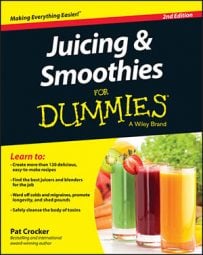Smoothies and juices are pure nutrients in a glass. They’re both loaded with nutrients, give you an energy boost, and taste fabulous. But they’re not the same thing. The difference lie in the machines used to make each drink:
-
Juice: To make fresh homemade fruit or vegetable juice, you need a juice extractor. Juice is the water and most of the nutrients that have been separated from the fibrous pulp in fruits and vegetables.
You can squeeze or press citrus fruit without the aid of a juicing machine, but the only way to juice harder fruits and vegetables is to run them through a juice extractor that presses or cuts and spins them so that the juice is extracted from the pulp.
-
Smoothies: Smoothies require a traditional or high-performance blender. When a liquid (such as fresh juice, milk, or broth) and fresh fruits and/or vegetables are processed into a purée in a blender, the resulting drink is thick and smooth — in other words, a smoothie.
Cored pieces of whole fruits and vegetables with the skin (if organic) are blended with juice or yogurt or other ingredients until the cells in the fruits/vegetables and other ingredients are so small that they’re transformed into a drinkable liquid. Smoothies are thicker and more filling than juices because they have all the pulp and fibrous cellulose that’s removed from juice.

